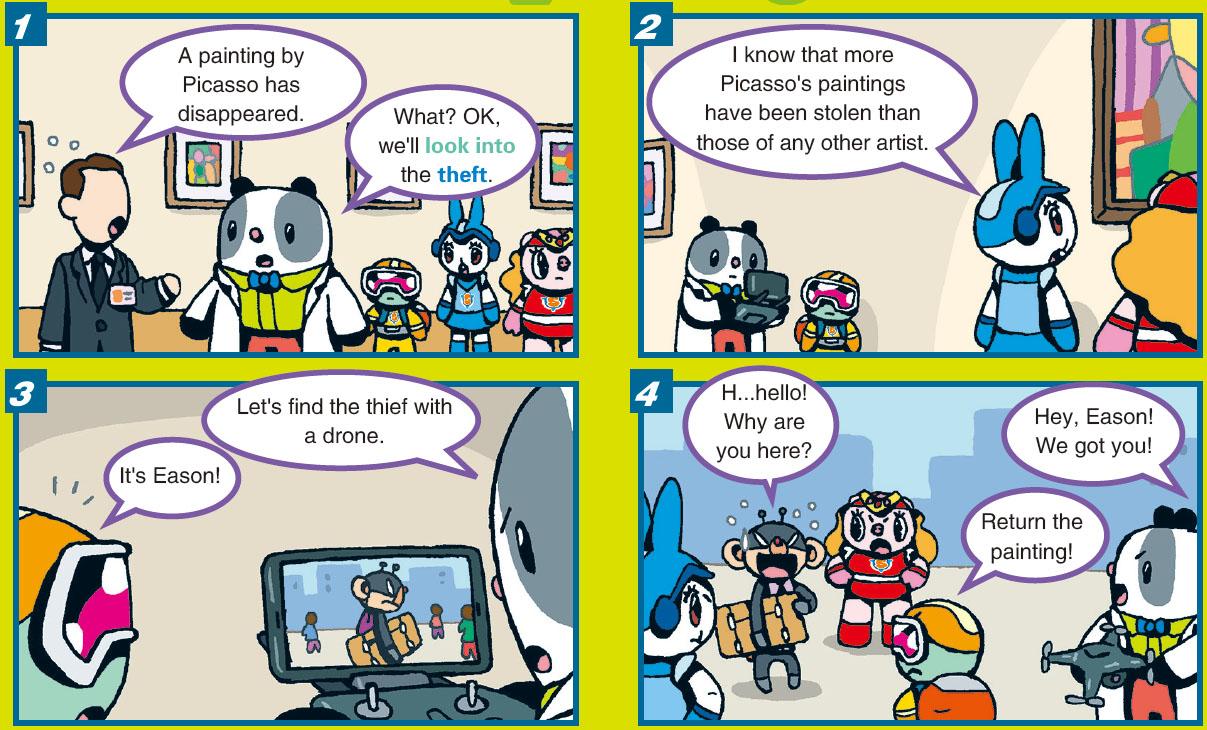Comic:Picasso and his abstract paintings
【明報專訊】Someone is asking the Smarties for help. What happened?
“ The guard: A painting by Picasso has disappeared. ”
“ Dr Panda: What? OK, we'll look into the theft. ”
“ MoMo: I know that more Picasso's paintings have been stolen than those of any other artist. ”
“ Dr Panda: Let's find the thief with a drone. ”
“ Bill: It's Eason! ”
“ Eason: H...hello! Why are you here? ”
“ Dr Panda: Hey, Eason! We got you! ”
“ Bill: Return the painting! ”
◆Know more
Pablo Picasso (畢加索,1881 - 1973) was a Spanish artist. He is considered one of the greatest artists of modern art. During his lifetime, he produced an estimated 50,000 artworks, including paintings, sculptures and ceramics (陶瓷). He drew in different painting styles. His famous works include Guernica and The Weeping Woman.
Picasso showed a passion for drawing from an early age. When he was only 14, he attended a famous art school. He also began to exhibit and sell his paintings. Later, he passed the entrance examination of another famous art academy but soon he was bored with the formal training which required copying classical paintings. Therefore, he began to experiment with new styles.
By 1909, he co-founded a new style called Cubism(立體主義). It means breaking up objects and drawing them in shapes such as squares, triangles or rectangles. To give texture, he sometimes added other materials to his paintings. His paintings during the Cubism period are abstract but fun to interpret.
■ English highway﹕To look into
is a phrasal verb which means ''to try to discover the facts about something, such as a problem or a crime''.
e.g. The company promised to look into the complaints.
The government is looking into how to promote renewable energy.
■Glossary
abstract (adj) 抽象的
theft (n) 盜竊
texture (n) 質感
interpret (v) 理解
[Smarties' Power English 第324期]






